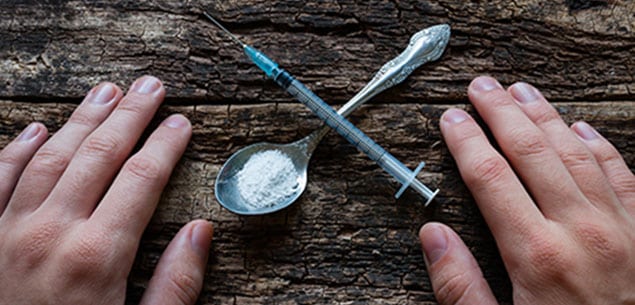
Learn more about Heroin and its side effects, withdrawal symptoms, and more.
Heroin is a powerful and illegal drug that was first developed in 1874. It is made from morphine and extracts of several types of poppy. It is typically a white or brown powder that has been processed or “cut” with another substance like:
- Sugar
- Quinine
- Starch
CONTACT US TODAY
There are several different forms of heroin, and those forms often depend on the drug’s place of origin. Pure heroin is white and usually come from Southeast Asia or South America. It can be smoked or snorted. The white form of heroin is often called “snow,” “China white,” and “white horse” among many other names.
Impure heroin is often brown due to the impurities left behind during processing. A type called “black tar” comes from Mexico. It is hard and sticky. Users dissolve it and then take it by injection. It also has many nicknames including “brown sugar,” “Mexican brown,” and “Mexican horse.”
Uses
When it was first made in 1874, heroin was originally and ironically believed to be non-addictive. People thus used it as a substitute for morphine and as a cough suppressant. After its addictive nature became apparent, Congress passed the Harrison Narcotics Act in 1914 to regulate the sale of many opiates including heroin. Ten years later, Congress banned the manufacture, sale, and importation of heroin altogether.
Heroin has a generic form called diamorphine that is used as a painkiller in a few countries, including the UK. It is strictly controlled and can only be administered by medical professionals as a prescription medication. It is used in palliative care and to treat people with severe acute pain caused by injury or surgery.
Side Effects

- Drowsiness
- Reduced sensitivity to pain
- Feelings of warmth
- Feelings of heaviness in the arms and legs
Tolerance and Dependence
Over time, the heroin user develops tolerance, which means they need to take an ever-increasing amount of the drug to get the same effects. Eventually, the user becomes physically dependent on heroin. Their body has adjusted to the drug to the point that if they try to stop taking the drug or even reduce the amount that they take, they risk developing withdrawal symptoms.
Physical dependence comes with a number of unpleasant physical side effects that can include the following:
- Dry mouth
- Itchy skin
- Sensitivity to light
- Grogginess
- Slowed respiration and heart rate
- Reduced body temperature
Prolonged use of heroin can cause severe damage to the user’s body. Over time, heroin can cause such conditions as liver damage, kidney damage, malnutrition, weakened immune system, coma, and death.
Withdrawal Symptoms
The heroin user will generally start experiencing withdrawal symptoms about five hours after their last dose. The symptoms can last for up to a week and are at their most intense during the second and third days. The physical symptoms of withdrawal have been compared to those of a severe case of flu accompanied by itching, yawning, and intense pain. Psychological symptoms include depression and an intense craving for heroin. The craving for the drug is the hardest part of the withdrawal to endure, and it can last for months.


